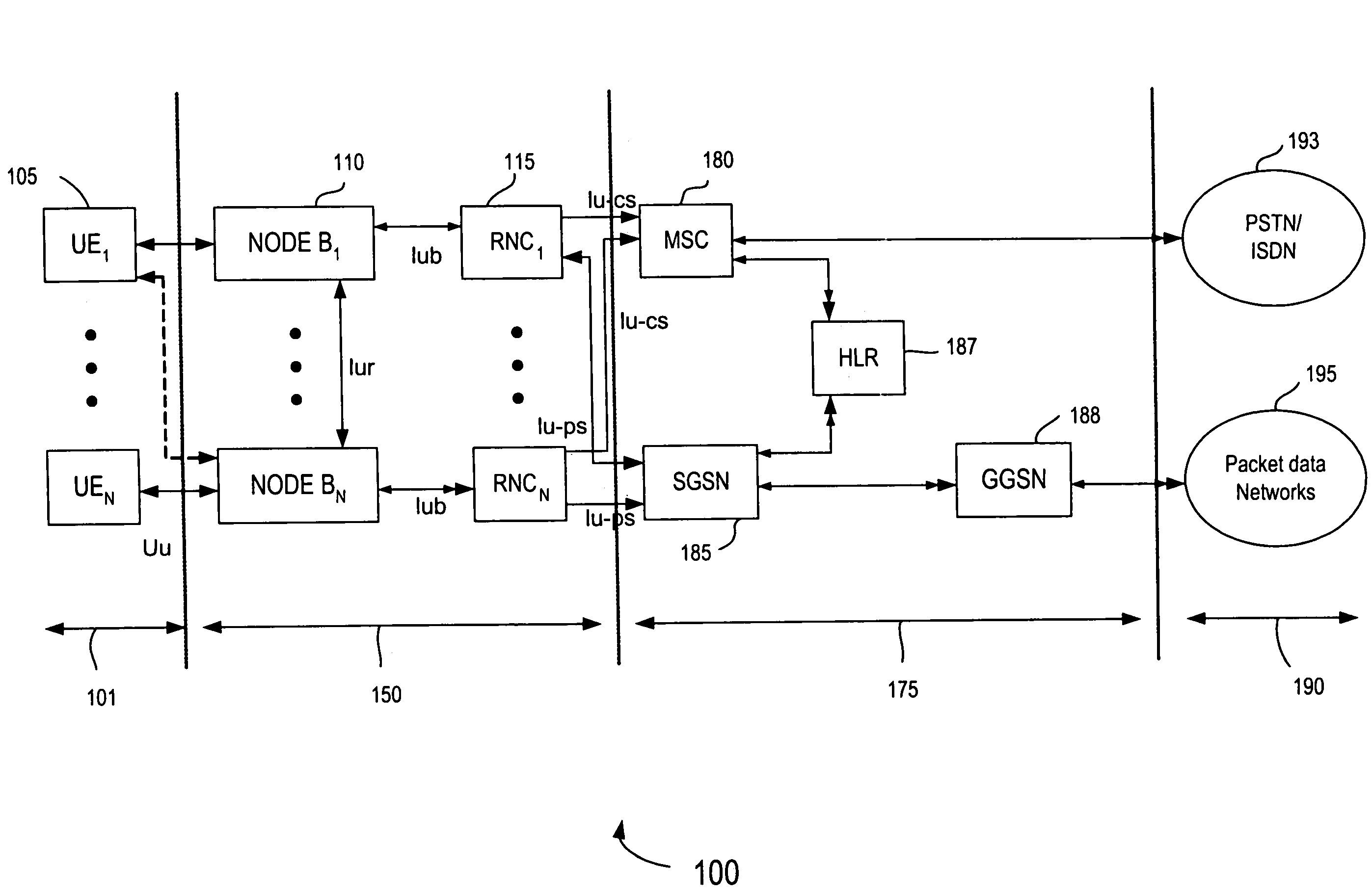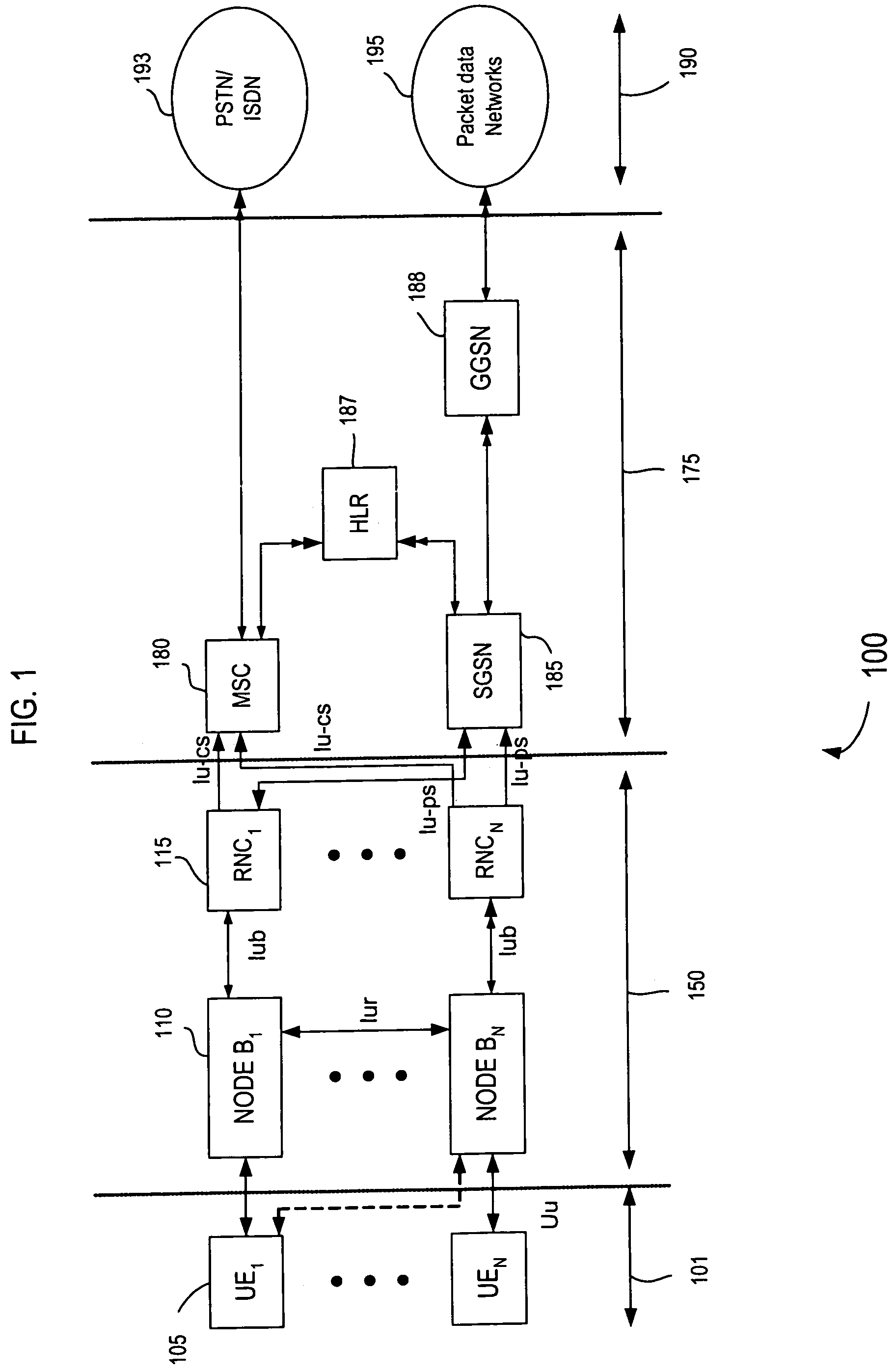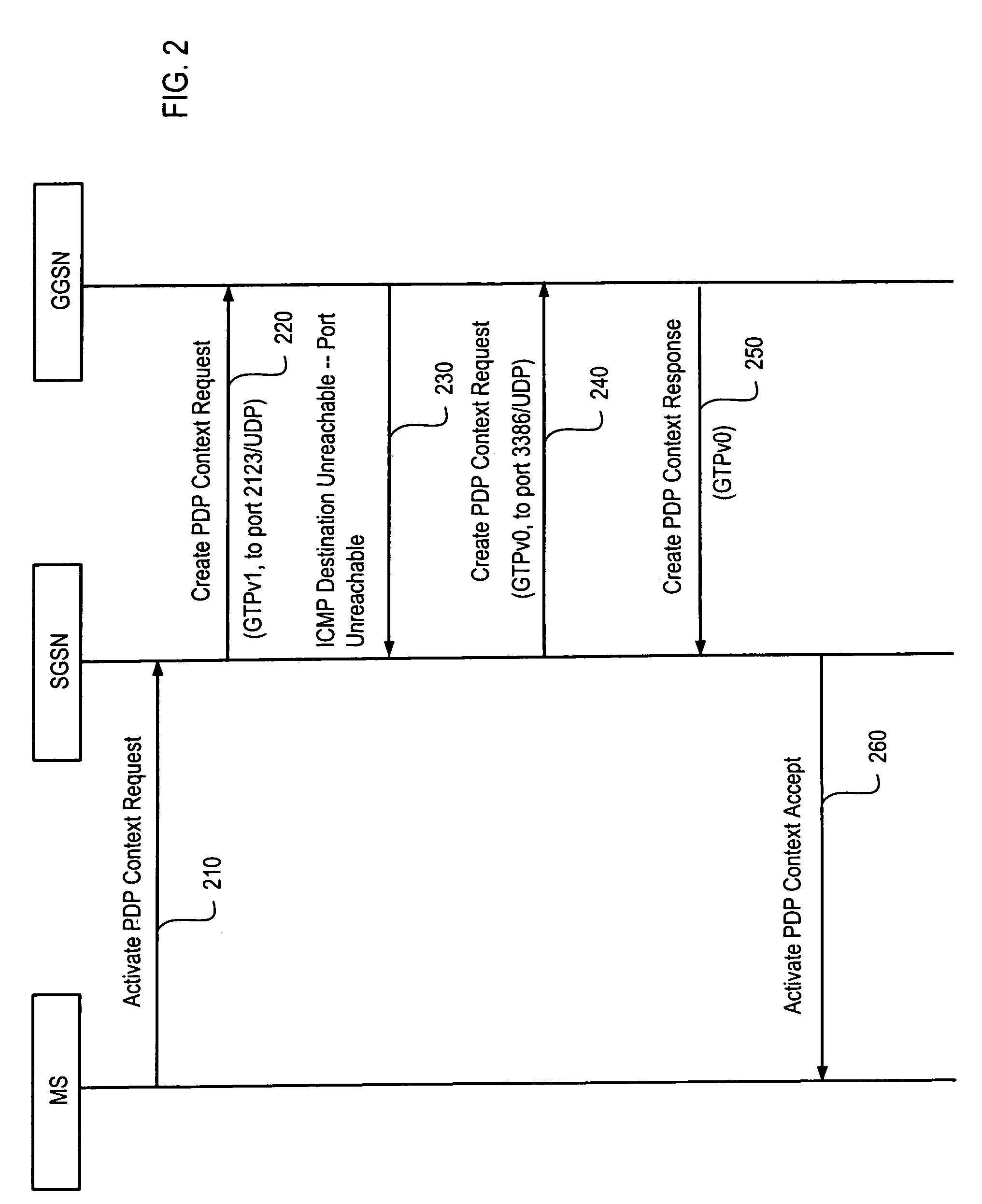Methods of detecting protocol support in wireless communication systems
a wireless communication system and protocol technology, applied in the field of wireless communication systems, can solve the problems of sgsn, inability to detect protocol support, and inability to drop back to a lower protocol version, so as to achieve the effect of facilitating communication
- Summary
- Abstract
- Description
- Claims
- Application Information
AI Technical Summary
Benefits of technology
Problems solved by technology
Method used
Image
Examples
Embodiment Construction
[0016]Although the following description of the present invention is based on the Universal Mobile Telecommunications System (UMTS) network infrastructure implementing a next generation Wideband Code Division Multiple Access (W-CDMA) air interface technology, it should be noted that the exemplary embodiments shown and described herein are meant to be illustrative only and not limiting in any way. As such, various modifications will be apparent to those skilled in the art.
[0017]Where used below, base station subsystem (BSS), base transceiver station (BTS) and Node-B are synonymous and may describe radio access equipment that provides data connectivity between a packet switched data network (PSDN) such as the Internet, and one or more mobile stations. Additionally where used below, the terms user equipment (UE) and mobile station (MS) may be interchangeable used. UE and MS are synonymous to user, subscriber, wireless terminal and remote station and describe a remote user of wireless r...
PUM
 Login to View More
Login to View More Abstract
Description
Claims
Application Information
 Login to View More
Login to View More - R&D
- Intellectual Property
- Life Sciences
- Materials
- Tech Scout
- Unparalleled Data Quality
- Higher Quality Content
- 60% Fewer Hallucinations
Browse by: Latest US Patents, China's latest patents, Technical Efficacy Thesaurus, Application Domain, Technology Topic, Popular Technical Reports.
© 2025 PatSnap. All rights reserved.Legal|Privacy policy|Modern Slavery Act Transparency Statement|Sitemap|About US| Contact US: help@patsnap.com



